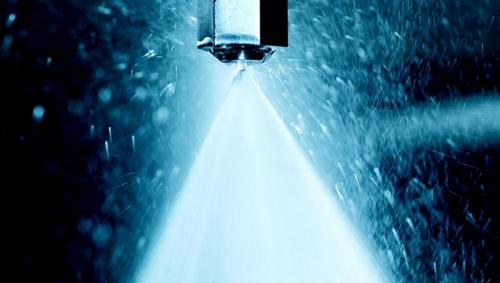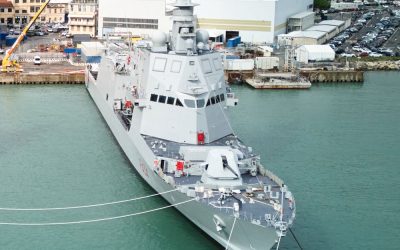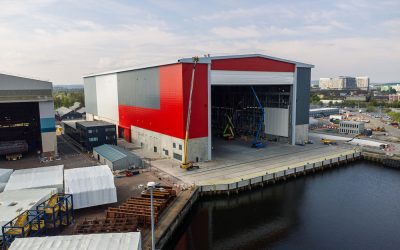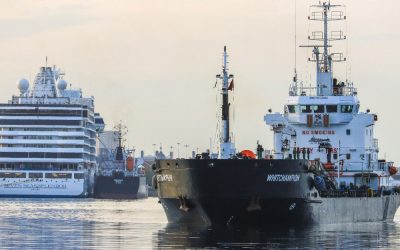Interest in autonomous and remotely controlled ships is burgeoning, with some researchers predicting a not-too distant future where 200m-plus cargo vessels ply the world’s oceans without a crew. The implications of this are huge for shipping companies, shipbuilders and maritime systems providers. However, there are many challenges to overcome if the use of autonomous ships for commercial long-sea journeys is to become a reality, with none more central than proving the vessels and their enabling technologies can operate safely.
All eyes, therefore, will be on the Yara Birkeland in early 2022 as it prepares to carry its first fertiliser cargo on the Herøya-Brevik route in Norway. The 3,200dwt ship’s maiden commercial operation will mark the start of a two year technology test phase as the vessel aims to become certified as an autonomous, fully electric container vessel.
Initially, it will operate with an onboard crew, before moving to a remote crew and finally to full autonomy. Also onboard Yara Birekland for its first laden voyage will be a unique, automatic and remotely operated firefighting system designed and commissioned by survival technology specialist Survitec. The system will be monitored by crew from a virtual bridge and machinery control room ashore.
Survitec’s scope of supply included a Novenco XFlow® water mist system for the vessel’s eight separate battery rooms; an Inergen® fire extinguishing system for the switchboard rooms, pumps rooms, control rooms and electrical spaces; and a Novenco XFlow® water spray system for the cargo holds, open decks, superstructure and other compartments.
“Safety has been taken high up on the agenda with this combination of systems,” Finn Lende-Harung, commercial director Fire Solutions, tells The Naval Architect.
In the areas where a gas solution was required, for example, the Inergen system was chosen not only for its excellent firefighting capabilities, but also because it is safe for human exposure at the system design concentrations. “Even though it will be a crewless vessel at some point, you will still get people such as service technicians on the vessel on a regular basis, and it was important to take this into account,” he explains.
New approach
On the different approach required to extinguish a fire aboard a crewless ship, Mariusz Slotwinski, product manager Water Mist Systems, says: “Typically, fire systems are built for manual operation, so we had to redesign the system for automatic activation based on the signals received from heat and flame sensors and CCTV cameras located all around the vessel. The fire systems also had to send signals to seawater pumps, gas cylinders and valves, providing alerts to operators shoreside.”
To facilitate activation from the virtual bridge and machinery control room onshore, the entire system had to be rethought. This new approach meant that Survitec had to redesign the Novenco system for 60 minutes of operation rather than the 30 minutes specified for conventional vessels. Additionally, as Yara Birkeland’s cargo holds are designed according to IMO MSC/Circ.608 requirements, which usually requires a manual firefighting approach, the NFF XFlow water spray nozzles had to be redesigned and sited for crewless operation.
Extra fire safety features have been built into the ship, including additional segregated fire zones and system redundancy. Drain valves have also been integrated into the system to allow for automatic opening and closing to prevent free-surface flooding.
System integration
Key to the project has been the extensive work carried out by the Survitec team to integrate the company’s system with Yara Birkeland’s Kongsberg control system, according to Lende-Harung. Something that will be integral to the success of any new and advancing technologies deployed on unmanned ships in the future. “The link between the vessel’s control system is crucial, becoming even more so on these unmanned systems. The systems need to talk together,” he says.
Survitec is currently designing a similar firefighting system for a pair of fully autonomous ferries under construction at a shipyard in India.
“This is just the beginning. As the industry starts to see these autonomous, alternatively fuelled vessels operating successfully and safely, demand will speed up. We predict more autonomous vessel projects over coming years. But in terms of ship safety, we’re already ahead of the curve,” Lende-Harung says.






